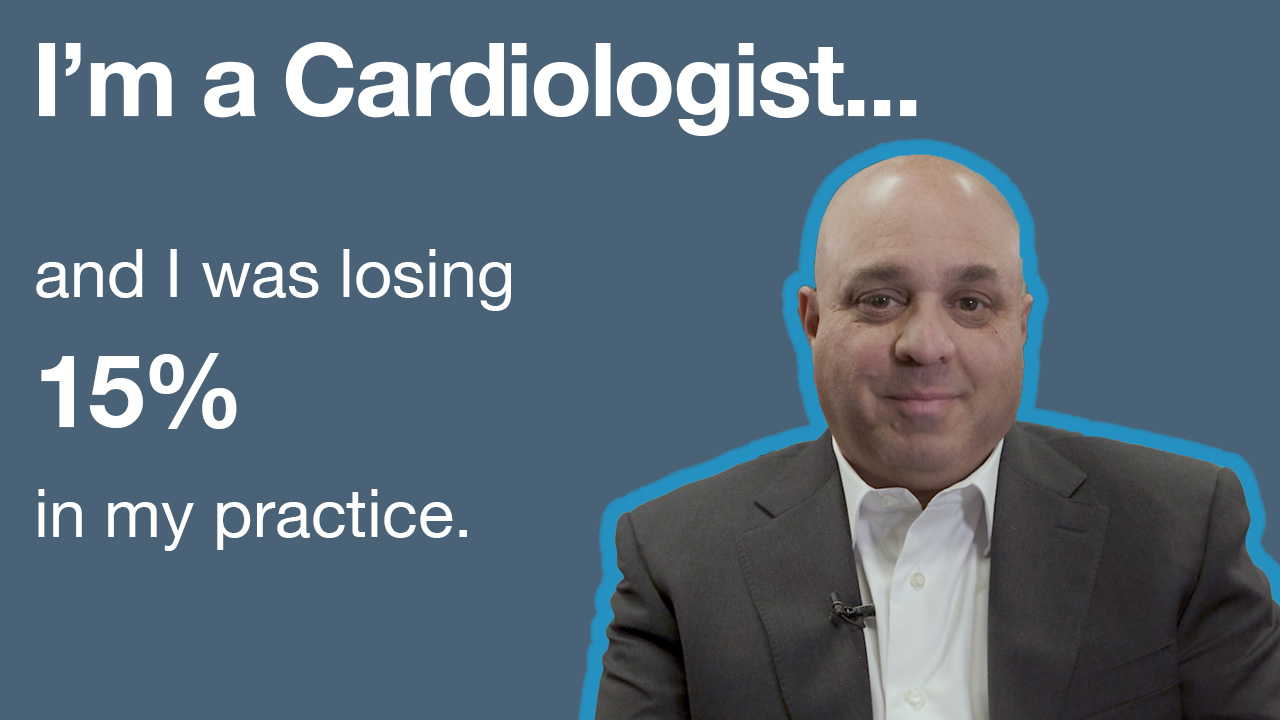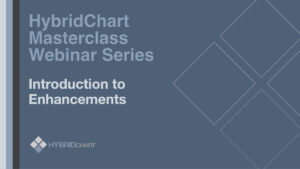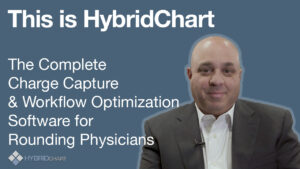As a practicing cardiologist, my day is a orchestrated chaos. It starts early, rounding across multiple hospitals, juggling consults, coordinating with care teams, and trying to carve out a few precious moments for a meaningful conversation at the patient bedside. As a rounding physician, I’m sure your days feel much the same. We thrive in this environment. We invite its turbulence, but we’d all agree that we wish it’d be a little less manageable.
In my early years of rounding, I had an unsettling feeling at the conclusion of each rounding day. It wasn’t the medical decisions and consultations – it was the operational inefficiency. I’d look at my system for rounding—a crumpled patient list, a pocketful of sticky notes scribbled with billing codes, and a mental checklist I hoped was foolproof. I knew, deep down, that this system was broken. And I suspected it was costing my practice dearly.
I wasn’t wrong. I knew there had to be a better way. So I combined my profession, and my passion for coding, and set out to find a better way to optimize the way I round.
What I discovered through building a solution for my own practice, and what our data has consistently shown since, is a staggering truth: Physician groups using outdated, paper-based rounding methods are unknowingly forfeiting up to 15% of their annual revenue.
Let that sink in. A 15% leak in hard-earned revenue. It’s not because we aren’t working hard enough. It’s because the tools we use to capture the value of that work belong to a different era.
The financial drain happens in a thousand small cuts. It’s the charge for a weekend consult that never makes it from a sticky note to the billing sheet. It’s the illegible handwriting that forces your billing staff to down-code a complex visit to be safe. It’s the days or even weeks of delay between patient encounter and claim submission, creating a cash flow bottleneck that strains your entire operation. Each instance seems minor, but compounded over a year across multiple providers, the financial impact is not only very real – it’s staggering.
We, as physicians, are trained to be meticulous. We document every detail in a patient’s chart. Yet, when it comes to the business side of our practice, we often rely on memory and scraps of paper. We finish a marathon day and then play a memory game, trying to reconcile our patient encounters with the charges we need to submit. It’s an exhausting and, frankly, unreliable process. The administrative drag of chasing down this information costs our staff valuable time and creates a constant friction between the clinical team and the revenue cycle team.
This is precisely the frustration that led me to create HybridChart. I wasn’t trying to build a software company; I was trying to fix a problem in my own cardiology practice. I needed a system that was as mobile and dynamic as I was. A system that could bridge the gap between my rounds at the hospital and my practice’s billing office.
The solution was to bring the process to the point of care. Imagine capturing every charge, for every patient, with a few simple taps on your smartphone, right at the bedside. The moment you finish with a patient, their visit is securely logged, coded, and ready for your billing team to review. There’s no more guesswork, no more lost notes, and no more end-of-day administrative headache. And furthermore, we have built many connections over the years to upload patient data from hospital ADT Feeds, and can equally automatically send information to many leading EHRs.
With a solution like HybridChart, your Revenue Cycle Management (RCM) team is no longer playing detective. They receive clean, accurate, and immediate data. The loop is closed in real-time. This is how you plug that 15% revenue leak.
But capturing that lost revenue is only half of the story. The secondary impact is, in many ways, even more valuable: time.
What would you do with the extra 60-90 minutes you’d get back every single day? Would you see one more patient? Would you spend more time collaborating with your partners on growing the practice? Or would you do something revolutionary, like get home in time for dinner with your family?
By automating the business side of rounding, you liberate your most valuable resource—your time and mental energy—to focus on what truly matters: your patients, your family, and your own well-being.
As physicians, our core mission is to diagnose and treat. It’s time we apply that same clinical rigor to the health of our own practices. The inefficiency of paper-based rounding is a chronic condition, and it has a proven, effective treatment.
I encourage you to take an honest look at your rounding workflow. If it relies on paper, memory, or cumbersome spreadsheets, you are leaving money on the table and sacrificing your personal time. I built HybridChart from one doctor’s perspective for another’s. But don’t take my word for it. Schedule a Demo and see for yourself.





